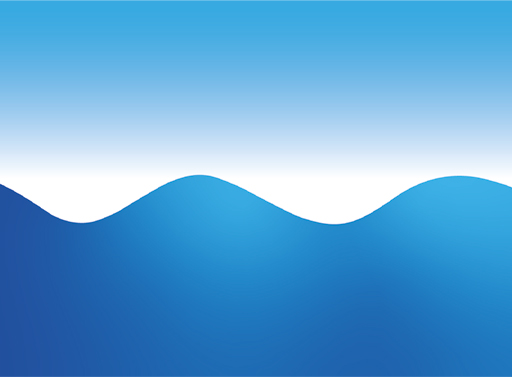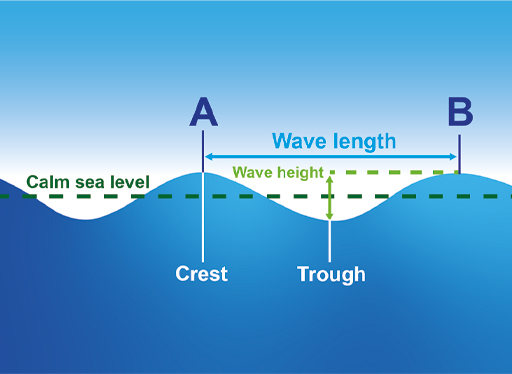2.1 Water waves
Let’s start with a familiar example: waves in water. When you throw a stone into a pond, a circular wave pattern emanates from the point of impact. When a duck swims across a lake, it leaves a triangular wave in its wake. Waves like these consist of a change in the water level, with a regular pattern of crests and troughs. This basic idea is represented in Figure 2. How would you measure a wave like this?
There are four quantities you might use to measure the wave’s motion.
The first is the distance between crests, which is called the ‘wavelength’. Wavelengths of water waves can vary hugely: from a few centimetres for the waves created by your pebble, to tens of metres for waves driven by strong winds, to hundreds of kilometres for tsunami waves triggered by earthquakes.
The second quantity describes how quickly crests and troughs alternate if you look at the wave at a fixed position. The number of cycles of crests and troughs in one second is called the ‘frequency’ of the wave. For our duck-made water waves, this is usually small (less than 1 per second). Cycles can take several seconds, for normal water waves, up to several minutes for tsunami waves.
The third quantity is the ‘wave speed’, which tells you how quickly the wave is moving. Again, this varies enormously: wind-generated ocean waves move at tens of kilometres per hour, whereas tsunami waves can move at hundreds of kilometres per hour.
As you might have noticed, these three quantities are related. The wave speed is the product of the wavelength and the frequency: speed = wavelength × frequency.
Question 1
What is the wave speed of a tsunami wave with a 200km wavelength and frequency of 4 per hour (which means one cycle takes 15 minutes)?
Answer
The speed is the product, so 4 x 200 = 800 kilometres per hour. This wave is moving about as fast as a commercial jet plane.
The fourth and final quantity describes how much the water level changes. This is called the ‘amplitude’ of the wave, and it’s measured by the difference between the crest level and the average (calm) surface.
Let’s now consider some other types of waves.


